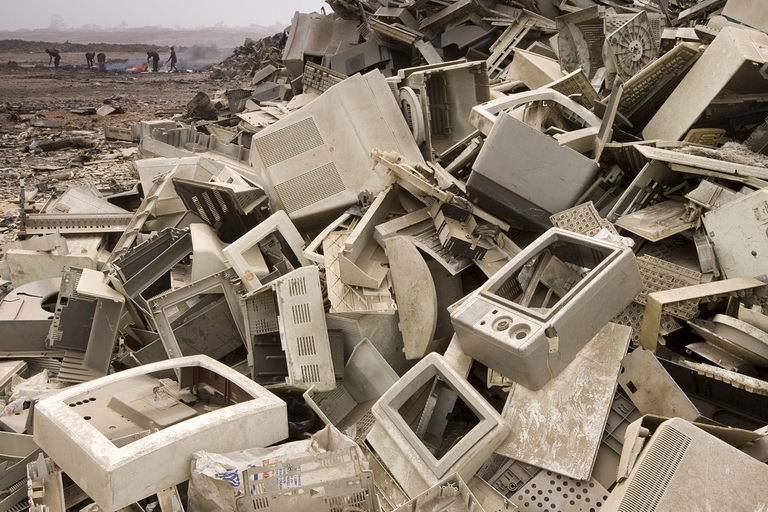
As per tradition after 12 years India held Mahakumbh, the world’s largest spiritual congregation that has been attracting pilgrims from across the globe.
In Livermore, in the US state of California, there’s a light bulb that has been switched on since 1901. It was manufactured in Ohio in 1895 and has curiously outlived three web cameras filming its activity to report its incredible lifespan. Named the Centennial Bulb, it has been in the Guinness Book of Records twice, first in 2007 and
In Livermore, in the US state of California, there’s a light bulb that has been switched on since 1901. It was manufactured in Ohio in 1895 and has curiously outlived three web cameras filming its activity to report its incredible lifespan. Named the Centennial Bulb, it has been in the Guinness Book of Records twice, first in 2007 and then in 2013, and is listed as the world’s longest running bulb. Proof that humans know how to manufacture long-lasting light bulbs.
To control the manufacture and sale of light bulbs, in 1924 Osram, Philips and General Electric agreed on what is known as the Phoebus cartel, aimed at reducing competition and standardising the life expectancy of light bulbs to 1,000 hours. This acted to prevent technological advances and is considered an important step in the development of what is known today as planned obsolescence.
After World War II the companies were sued and had to pay fines, but by that time the industry standard of 2,500 hours in 1924 had dropped to 1,000 hours by 1940. (Though we need to acknowledge that the efficiency of a light bulb may differ, as an incandescent one may require too much energy to continue working the same way after 1,000 hours).
During the Great Depression, in 1932, economist Bernard London theorised that all goods were to be produced following the principle of planned obsolescence: everything would be useable for a finite time before becoming obsolete. Consumers would have no choice but to buy replacements, thus sustaining demand and stimulating the depressed economy.
This idea would emerge again in the 1950s, but adapted to a different situation. Brooks Stevens, an industrial designer, focused on the appearance of objects, instilling in the consumer the desire for new products and interest in the latest trends. After years of recession, there was enough prosperity in the United States to allow people to abandon products sooner than necessary in order to keep pace with the latest designs. This was a more rewarding approach from the consumer’s point of view, which strongly influenced the hyper-consumeristic society of today.
That of electronics is a highly competitive market and technology changes and improves constantly. In fact, nowadays it isn’t functional breakdown that pushes most people to buy a new smartphone, instead, minor improvements and fashionable changes attract repeat consumerism. Some items are even programmed to not last long in the first place: for example, when it first came out not only was the iPod’s battery non-replaceable but it only lasted a year. And even if other products such as printers can easily be used for five or six years or even more, manufacturers oblige consumers to use original cartridges and spare parts.
Most manufacturers are responsible for pushing the consumer to buy new products even when they don’t need them, wasting resources and, ultimately, energy. In addition, all this electronic waste, or e-waste, goes to countries like Ghana or China, where people extract copper, aluminium and other materials using methods that are harmful to people’s health and the environment.
So the unanswered question remains whether innovation has become dependant on continued consumption and if it would exist without this impulse to buy things we don’t need.
Siamo anche su WhatsApp. Segui il canale ufficiale LifeGate per restare aggiornata, aggiornato sulle ultime notizie e sulle nostre attività.
![]()
Quest'opera è distribuita con Licenza Creative Commons Attribuzione - Non commerciale - Non opere derivate 4.0 Internazionale.
As per tradition after 12 years India held Mahakumbh, the world’s largest spiritual congregation that has been attracting pilgrims from across the globe.
Workers in tea gardens of West Bengal, India, that produces Ctc tea for domestic consumption complain that they have been devoid of basic facilities while political parties make hollow promises during every elections which are never fulfilled.
India is in the middle of the elections, but sadly none of the politicians have uttered a word on man-animal conflict that has been devouring several lives every year.
Manipur, a state in north-east India, is still reeling under the tremors of violence that broke out last year devouring lives and paralyzing the economy.
The government of Tanzania is currently planning to evict more than 80.000 indigenous Maasai people from their ancenstral land
A new UNU-INWEH report on the global bottled water industry reveals the massive scale of this market and the lack of strict quality controls.
Isatou Ceesay founded a social enterprise that is helping to fight plastic pollution and empowering women and young people to gain economic independence.
In 2020, Mihela Hladin made a radical decision that many, in recent times, have probably considered. This is her story, with photos by Matt Audiffret.
The Brazilian government has started evicting illegal gold miners, responsible for the health emergency that has hit the Yanomami people.










